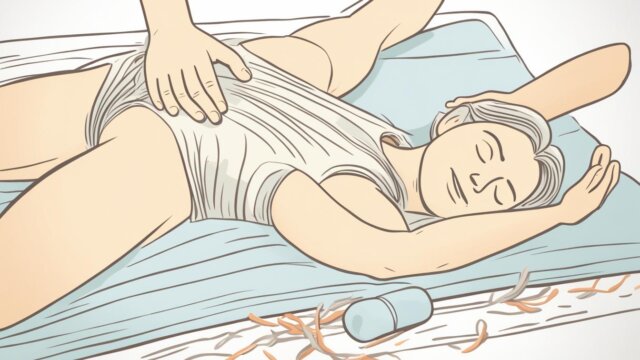FTC disclaimer: This post may contains affiliate links and we will be compensated if you click on a link and make a purchase.
Do you suffer from asthma? Are you looking for a way to treat your symptoms without spending hundreds of dollars on expensive medications?
Asthma is a common condition that affects millions of Americans every year. It causes breathing problems, coughing, wheezing, and chest tightness.
There are many over-the-counter inhalers available for treating asthma. However, most of these inhalers require you to buy separate spacers to fit each size of the inhaler.
This means you’d have to carry around multiple spacer sizes just to get the correct dose of medication.
This is where the new Inhaler with Spacers comes in. It has two parts – the inhaler part and the spacer part. The inhaler will release medicine directly into your lungs when you inhale.
When you exhale, the spacer will push air back into the inhaler part to help disperse the medicine further.
Let’s look into what a spacer is for Asthma and how to use the inhaler with a spacer.
What is Spacer for Asthma?
The spacer is an add-on device used by an asthma patient and a metered-dose inhaler (MDI). Different types of spacers are available in the market.
Some spacers add space between the mouthpiece of MDI and the patient’s mouth. Other spacers serve as chambers containing valves.
In this case, the aerosol from the MDI is briefly held in the chamber from which the patient inhales the aerosolized medication.
It is broadly defined as any tube-like add-on device attached to MDI. Spacers are made of plastic or metal tubes. The inhaler is fitted at one end of the spacer.
At the other end, the patient breathes normally. To exhibit successful inspiration, some spacers have a collapsing bag design.
Usage of Spacer for Asthma

How to Use Inhaler with Spacer?
If you have asthma, you know having an inhaler is crucial. But what do you do when you can’t find your inhaler, or it’s empty?
Don’t worry; there’s a backup plan. A spacer with a mouthpiece is a great way to ensure you get the medication you need, even if you can’t find your inhaler.
Spacers are devices that attach to the mouthpiece of your inhaler and hold the medicine in a chamber. That way, when you breathe, the medicine goes straight to your lungs instead of being wasted in the back of your throat.
Conversely, mouthpieces are small, disc-shaped devices that fit over the end of your inhaler. They help direct the medicine into your mouth and throat so it can get to your lungs more easily.
How to use a spacer with a mouthpiece?
Here’s how to use a spacer with a mouthpiece:
- Remove the cap from your inhaler and shake it well.
- Attach the spacer to the mouthpiece of the inhaler.
- Put the inhaler’s mouthpiece into your mouth and seal your lips around it.
- Breathe out slowly and evenly.
- Press down on the canister to release a puff of medicine into the spacer.
- Breathe in slowly and deeply through your mouth, counting to 10.
- Hold your breath for 10 seconds.
- Repeat steps 5-7 until you’ve taken the prescribed number of puffs.
- Remove the mouthpiece from your mouth and replace the cap on the inhaler.
- Wash your mouthpiece and spacer with warm, soapy water and let them air dry.
You can still use your inhaler if you don’t have a spacer. Just follow these steps:
- Remove the cap from your inhaler and shake it well.
- Put the inhaler’s mouthpiece into your mouth and seal your lips around it.
- Breathe out slowly and evenly.
- Press down on the canister to release a puff of medicine into your mouth.
- Breathe in slowly and deeply through your mouth, counting to 10.
- Hold your breath for 10 seconds.
- Repeat steps 4-6 until you’ve taken the prescribed number of puffs.
- Remove the mouthpiece from your mouth and replace the cap on the inhaler.
- Wash your mouthpiece with warm, soapy water and let it air dry.
If you use a spacer with your inhaler, clean it regularly. Spacers can collect germs and dirt, so it’s important to clean them with warm, soapy water and let them air dry.
You should also replace your spacer every six months or sooner if it becomes damaged.
Follow these steps, and you’ll be sure to get the most out of your asthma medication, even if you can’t find your inhaler.
Benefits of using a spacer for Asthma
Without a spacer, the patient has to coordinate the timing of a set of actions. This includes pressing down on the inhaler, breathing the medication deeply as soon as it is inhaled, holding your breath, and exhaling.
All the patients are not expert enough in executing this sequence. Using a spacer eliminates the issue of sequential timing of events.
The spacer slows down the speed of the aerosol coming from the inhaler. Thus, there is a lesser impact of the drug on the mouth, and more quantity of the drug enters the lung.
It reduces the side-effect of the corticosteroid on the mouth. Also, a lesser drug quantity is needed to achieve an effective dosage form.
Valves of the spacer enable the inhalation of the aspirated drug while exhalation goes out into the air. With the help of a spacer, inhalers can be efficiently used by children under five and the elderly.
Disadvantages of Using Spacer for Asthma
The use of a spacer is advised by many doctors, although it has a few disadvantages:
- A spacer can be bulky, thereby limiting the portability of the inhaler
- Devices along the inhalation path – such as a spacer – can cause the medication to deposit before reaching the patient. Therefore, the patient receives less than the measured dose.
There are several different brands of spacer, such as Volumatic, Nebuhaler, AeroChamber, and Able Spacer. They make using an inhaler simpler and reduce side effects.
Precautions for spacer
Certain precautions to be taken while handling a spacer are discussed as follows:
- Proper use of a spacer with an inhaler should be demonstrated to the patient by the doctor or nurse.
- Ensure that the spacer properly fits your inhaler
- Attach one end of the spacer to the inhaler and breathe through the mouthpiece of the spacer.
- For every puff of your inhaler, it is advisable to take at least two deep breaths.
- If you find it difficult to take deep breaths, you must continuously breathe in and out.
- Using a metal or anti-static spacers ensures maximum medicine reaches the patient’s lungs.
- Wash your spacer every month and dry it thoroughly. Anti-static spacers can help ensure that most of the medicine gets into your lungs.
- Spacers should be replaced annually, especially if you use them daily.
Conclusion
An inhaler spacer is a device that helps to deliver asthma medication to the lungs more effectively. When used correctly, an inhaler spacer can help to improve asthma symptoms and make it easier to control asthma.
If you or someone you know has asthma, talk to your doctor about whether an inhaler spacer is right for you.








